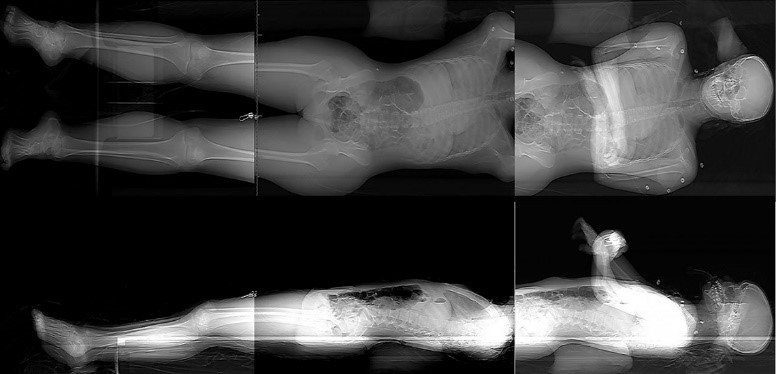A research team from the University of New Mexico created a large postmortem image database to improve the health of the living. The New Mexico Decedent Image Database contains an impressive 85 terabytes of information including computed tomography scans of over 15,000 deceased individuals and 69 metadata tags related to lifestyle, health, and cause of death.
The image repository, which is available for free to vetted users at nmdid.unm.edu, is already being used for a wide variety of research and education projects, including studies to improve automobile safety and COVID-19 case studies for distance learning programs. The team has also conducted a series of four webinars on how to best use the site, search engine, and image scans.[1]
The researchers recognize the database has a limited reach because it only reflects mortality patterns and diversity for the state of New Mexico.
Project Design
Medical examiner data has several advantageous qualities over vital statistics data, including health and lifestyle information about the deceased.[2] Heather J.H. Edgar and her team, with support from the National Institute of Justice, created the first postmortem computed tomography database for investigators who need large, diverse, high-quality datasets to answer their public health research questions.
From 2010 to 2017, the researchers compiled data from 15,236 decedents seen by the University of New Mexico’s Office of the Medical Investigator. Each decedent underwent a traditional autopsy and received two high-resolution full body computed tomography scans at the Center for Forensic Imaging (4,000 images each, one optimized for bone, one for soft tissue). Each scanned individual also had “scout images comparable to whole body X-rays.”
For about 4,000 decedents in the database, the research team contacted the next of kin and primary care physician to gather more information about alcohol usage, drug usage, and history of disease.
The researchers removed any personally identifiable information from the scans before being added to the database.
To test the validity and strength of these images versus traditional gross examinations, the researchers compared skeletal dimensions and volumetric measurements calculated from their computed tomography scans to autopsy data from medical examiners. Results from this pilot study showed no significant difference between traditional measurements and those made from reconstructed computed tomography scans.[3]
Investigators can submit a request for images through the database’s website. A three-member research committee reviews the requests, which include information about professional affiliations and research criteria. If the request is approved, the investigator can log into the website and download the images or the committee sends the investigator a portable hard drive with the images they need.
Potential Impact and Limitations of the Database
The New Mexico Decedent Image Database could be used for research in the fields of anatomy, pathology, growth and development, biomechanics, forensic anthropology and medicine, and public health. Edgar’s team speculated on potential projects, including “detecting child abuse through a better understanding of childhood health and bone density; survivability of trauma to the body in un-helmeted motorcycle deaths; refinement of aging and sexing methods; and lean and fat body mass estimation from the skeleton.”
The postmortem computed tomography scans also resulted in a reduction in the number of gross examinations by the University of New Mexico Office of the Medical Investigator, which enabled the office’s forensic pathologists to better manage increasing caseloads.
The researchers recognize that their image database lacks information on children ages 3 to 12 years and has very few scans of African Americans and Asian Americans. However, they hope their work “sets a precedent, and perhaps some new standards, for the use of medicolegal data from other resources worldwide.”
About this Article
The research described in this article was funded by NIJ grant 2016-DN-BX-0144, awarded to the University of New Mexico in Albuquerque, New Mexico. This article is based on the grantee final report “Facilitating Forensic Research in Multiple Fields Using a Unique Computed Tomography Dataset” (June, 2021) by Heather J.H. Edgar.


